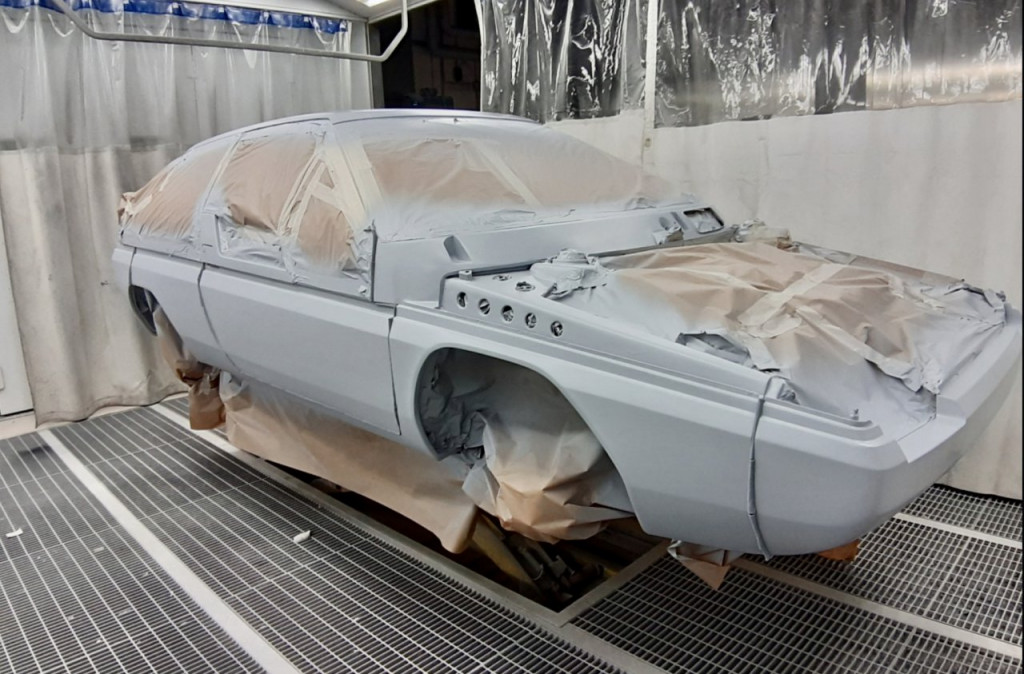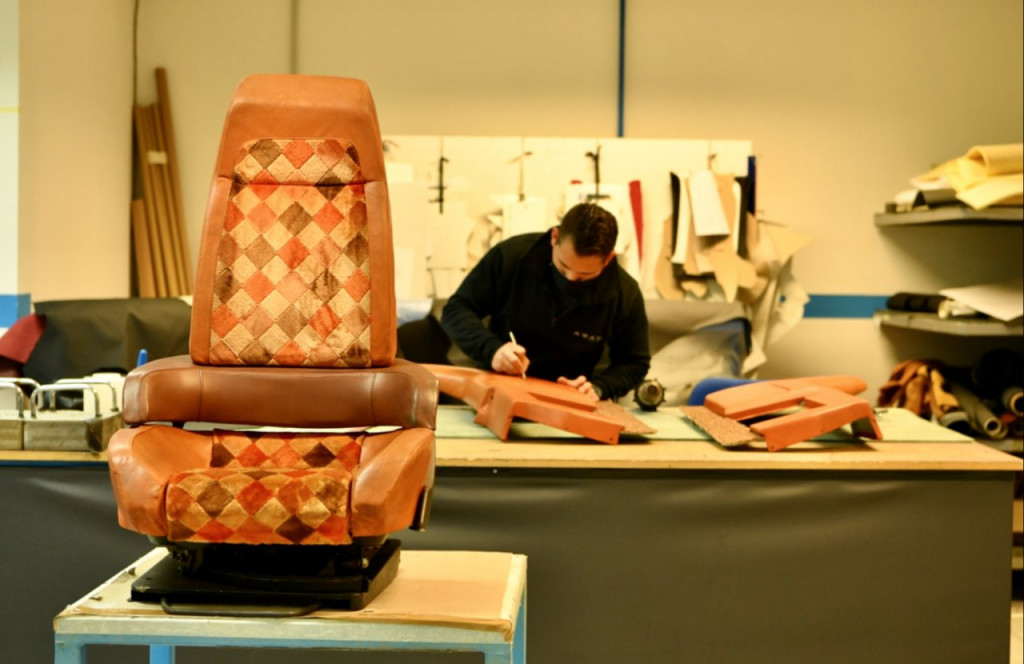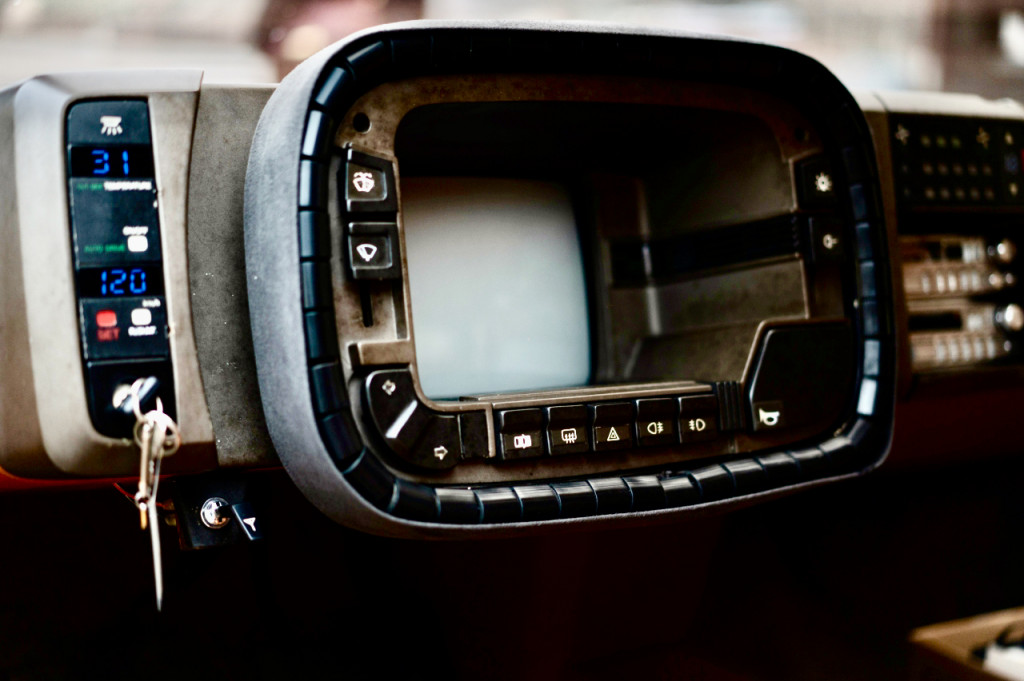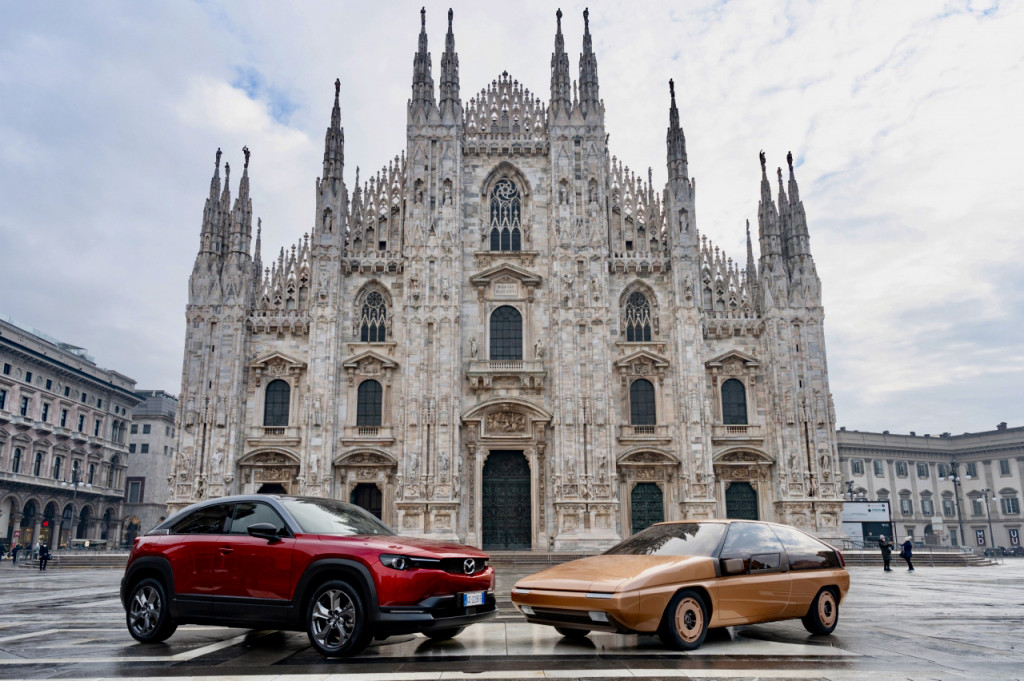Mazda has displayed its first concept car, the MX-81, now restored and accompanying the company’s newest and first electric vehicle, the MX-30 crossover utility.
As were so many concept cars for Japanese automakers in the 1980s, the 1981 MX-81 was designed in Italy, in this case at Bertone by Giorgetto Giugiaro. The concept, alternately known as the Bertone Aria, also was restored in Italy, by SuperStile of Turin, a product-engineering and prototype-building workshop established in 2015.
Due to the pandemic, the cars were presented on the 40th anniversary of the MX-81 via video conference from Hiroshima, Japan, and from Rome and Turin, Italy, with the cars presented in front of the Duomo di Milano, the cathedral in Milan that also has been the backdrop for the debut of the MX-81.

1981 Mazda MX-81 concept car undergoes restoration at SuperStile in Turin

1981 Mazda MX-81 concept car undergoes restoration at SuperStile in Turin

1981 Mazda MX-81 concept car undergoes restoration at SuperStile in Turin

1981 Mazda MX-81 concept car undergoes restoration at SuperStile in Turin

1981 Mazda MX-81 concept car undergoes restoration at SuperStile in Turin

1981 Mazda MX-81 concept car undergoes restoration at SuperStile in Turin

1981 Mazda MX-81 concept car undergoes restoration at SuperStile in Turin
The creation of the MX-81, powered by Mazda’s new turbocharged and fuel-injected 1.5-liter 4-cylinder engine, was motivated by a desire to imagine how people would interact with a vehicle equipped with computers. The car featured digital displays and a CRT screen within the rectangular “steering wheel.” We put steering wheel in quotes because instead of the conventional wheel, the car was steered via a flexible plastic belt that surrounded the rectangular “wheel.”

‘Steering wheel’ didn’t turn, but the belt around it did and was used to steering the vehicle
At the time, Mazda reported, “With its gold paint, huge glasshouse and pop-up lights, it stood out at the Tokyo Motor Show, but with its recessed square steering wheel, TV screen cockpit and side swinging front seats, it was arguably the interior that was the most radical. A one-off concept that certainly met the defy convention ethos of MX models, it led to a future relationship with Bertone, while things like the high-mounted taillights and pop-up headlamps appeared in future Mazda production cars later in the eighties.”
Mazda indicated the MX-30 was motivated with similar goals for accelerating the future, and now incorporating an electrified powertrain.

MX-30 and MX-81 photo opp Mazda indicated the MX-30 was motivated with similar goals for acceleratin
The MX-81 reportedly had been stored away for many years in a warehouse in southern Japan, and it underwent mechanical freshening at Mazda’s workshops before being sent off to Italy for the exterior and interior restoration.
The car’s creation is shared in a 13½-minute video with Italian subtitles. Even if you don’t understand the language, the images and the enthusiasm of Giugiaro and others is instructive of what went into the car’s design.
This article, written by Larry Edsall, was originally published on ClassicCars.com, an editorial partner of Motor Authority.